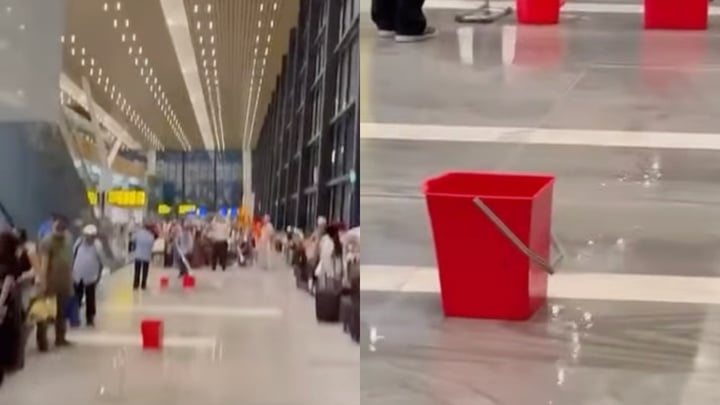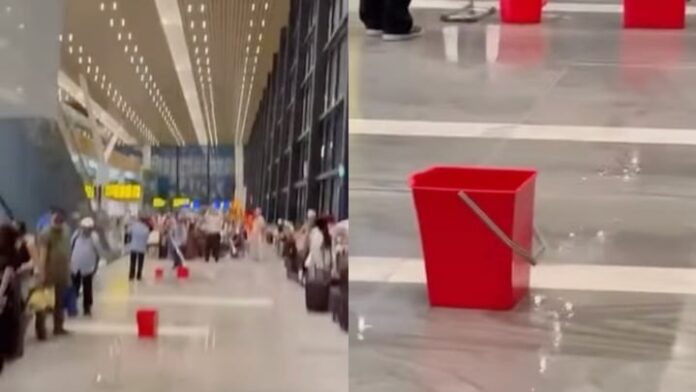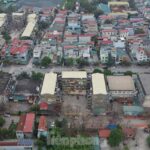In response to inquiries from VTC News, a representative from the Management Board of the Tan Son Nhat International Airport Terminal 3 construction project confirmed that there was a water leakage issue at the departure gate waiting area of Terminal 3 following heavy rainfall on the evening of May 7th.
According to the representative, the water leakage occurred due to gaps in the adhesive used for the terminal’s glass roof. The extreme heat and prolonged high temperatures are believed to have impacted the adhesive’s quality. Additionally, the construction project was ahead of schedule, leaving insufficient time for real-world testing before its operation.

The Management Board confirmed that the water leakage was due to gaps in the adhesive used for the glass roof, and the issue has been resolved by re-applying the adhesive.
“This is a minor issue caused by the adhesive coming loose on the glass roof, and it is not related to the quality of the structure. We have acknowledged the problem and immediately resolved it by re-applying the adhesive,” affirmed the representative from the Management Board.
When asked about the possibility of a recurrence if Ho Chi Minh City experiences more heavy rainfall, the representative assured that after reinforcing the affected area, there should be no further water leakage issues.
Prior to this, a video circulated on social media showing water dripping from the glass roof onto the floor in the departure gate waiting area. Staff were quick to clean up the water, and passengers continued to move and wait as usual.
The incident came as a surprise to many, as Terminal 3 is considered the most modern passenger terminal in the country, having just been inaugurated and put into operation on April 19th. It is one of the key projects of Ho Chi Minh City and the nation, completed two months ahead of schedule.
The Tan Son Nhat Terminal 3 project is a national key project with a total investment of over VND 10,000 billion, undertaken by the Vietnam Airports Corporation (ACV).
According to the design, Terminal 3 has a capacity to serve 20 million passengers per year, equivalent to 7,000 passengers during peak hours. The structure comprises one basement and four floors, with a total floor area of approximately 112,500 sq. m.
Terminal 3 features two separate levels for departing and arriving passengers, with 90 traditional check-in counters, 20 self-service bag drop units, 42 check-in kiosks, 27 boarding gates (including 13 jet bridges and 14 bus gates), 6 outbound baggage islands, 10 inbound baggage carousels, 25 security checkpoints, and a dedicated area for VIP, business, and priority passengers.
The Heavy Rainfall Submerges Sections of National Highway 1A
Heavy rainfall has caused severe flooding on National Highway 1A, particularly in the Ha Trung district of Thanh Hoa province. The deluge has resulted in deep waterlogged stretches, disrupting traffic flow. Authorities have promptly responded, deploying personnel on the ground to regulate and divert traffic, ensuring the safety of commuters and facilitating a swift return to normalcy.



















